mobile View, to the German Version tap the flag
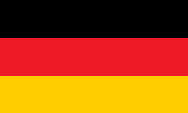

- Part of the United Kingdom of Great Britain and Northern Ireland
- with own Legislation
- own names:
– English, Scots: Scotland
– Scottish Gaelic: Alba
– Latin: Caledonia
• Flags
• Meaning/Origin of the Flag
• Coat of Arms
• Meaning/Origin of the Coat of Arms
• Map
• Numbers and Facts
• History
• Origin of the Country's Name
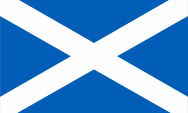
National flag
ratio = 3:5,
Source, by:
Wikipedia (DE)





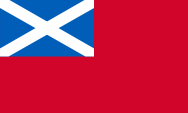
since 2017,
Unofficial merchant flag
ratio = 3:5,
Source, by:
Wikipedia (EN)





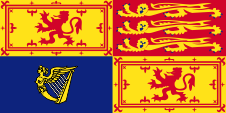
Royal Standard for use in Scotland
ratio = 1:2,
Source, by:
Flags of all Nations



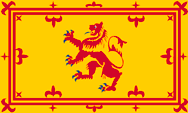
former flag of the scottish kingdom (Banner of Scotland),
today flag of the secretary of state for Scotland
ratio = 3:5,
Source, by:
The Observers Book of Flags






The national flag of Scotland is a single coloured blue flag with a white diagonal cross. This is the St. Andrew's cross. St. Andrew (St. Andreas) is the patron saint and national saint of Scotland. The flag is named "Saltire". It is mentioned in records between 1286 and 1292, but is probably very much older. It is assumed that the flag’s colours were originally black and white, the Celtic national colors. The shade for the blue of the Scottish flag is not exactly defined, but the blue has to be brighter than in the Union Jack, where the blue is fixed with Pantone 280. In practice, the shade Pantone 300 has apparently prevailed for the blue in the flag of Scotland. The ratio of the pages is also not fixed, 3: 5 has proven itself. Another flag, still highly regarded, is the red-golden flag of the Scottish Kingdom, derived from the coat of arms of the Scottish Kings. This flag is used twice instead of once within the quarters of the flag of the Britisch Queen(King) for use in Scotland since 1910.

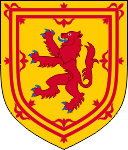
Coat of arms of Scotland,
Source, by: See page for author,
CC BY-SA 3.0, via Wikimedia Commons

The shield of Scotland is single coloured golden with a climbing red lion in the centre, within a red, lily-adorned frame. The lion has its roots in William the Lion (1143/1165–1214) and the lily-frame is mentioned in records since 1222. The lily-adorned frame reminds of the former long standing alliance between Scotland and France.
Source: Wikipedia (DE)

Location:
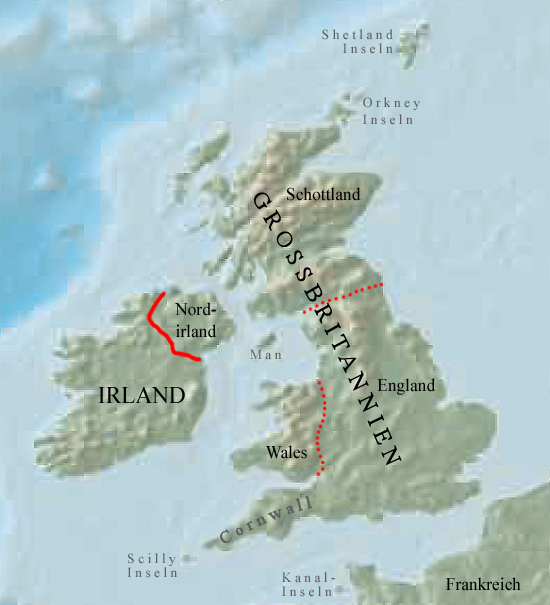
Source: Freeware, University of Texas Libraries, modyfied by: Volker Preuß
Map of the country:
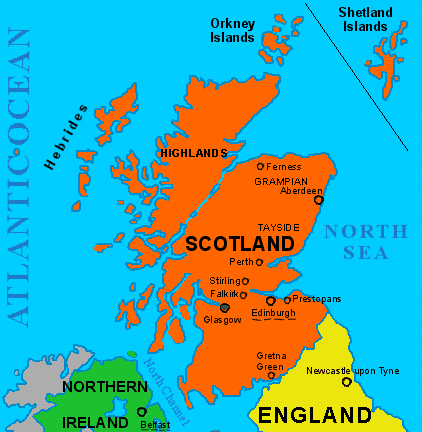
Source: maps-of-scotland.blogspot.de

Area: 30.081 square miles
Inhabitants: 5.438.100 (2018)
Density of Population: 180 inh./sq.mi.
Capital: Edinburgh, 524.930 inh. (2019)
official Language: English, Scottish Gaelic
other Languages: Scots (Lallans)
Time Zone: Greenwich Meantime = CET – 1 h
Source:
Wikipedia (DE)

ca. 400 B.C. · immigration of Celtic tribes toward Scotland
85 · Britain becomes a province of the Roman Empire
120–128 · construction of the Roman Hadrian's Wall against Scotland
195 · the Hadrian's Wall is overrun
ca. 420 · colonization of Scotlands by the Scots
ca. 850 · subjection of the native Pikts by the Scots, establishment of the Kingdom of Alba
9th century · Vikings (Norwegian) capture the north of Scotland
1263 · re-capture of the Norwegian territories (except the Nordic Islands) in Scotland by King Alexander III.
1296 · England occupies large parts of Scotland
1297 · expulsion of the English
1306 · Robert Bruce becomes King of Scotland
1314 · Battle of Bannockburn, victory of the Scots over the English
1371 · the House Stuart becomes rulers of the Scottish Kingdom
1472 · the Nordic Islands come to Scotland
1559–1568 · Reformation, religious war in Scotland
1568 · escape of the Catholic Scottish Queen Mary Stuart from Scotland and subsequent imprisonment in England
1587 · execution of the Mary Stuart
1578 · James VI. (Jacob VI.) becomes King of Scotland
1603 · James VI. (Jacob VI.) becomes also King of England as James I. (Jakob I.)
1707 · constitutional unification of England and Scotland into United Kingdom
1745 · Prince Charles Edward Stuart (Bonnie Prince Charlie) coming from France, lands in Scotland, battles against England
1746 · Battle of Culloden Moor, Charles escapes to France
since 1746 · partially rigorous anglicizing of Scotland
1997 · successful plebiscite for an independent Scottish regional parliament
1st of July in 1999 · the regional parliament begins its work
2014 · referendum for an exit from the United Kingdom: 55% rejection
Source:
Atlas zur Geschichte,
World Statesmen,
Wikipedia (DE)

The country's name derives from "Scoti", the Latin name for the Celtic Gaels, which probably goes back to the Greek word "skotos" meaning "dark". The country name "Scotia" was originally used for the island of Ireland, from the 11th century it was used to describe the area north of the River Forth. Also in use were Alba, Albania or Albany, which go back to the Gaelic country's name.
Source: Wikipedia (DE)


![]()














